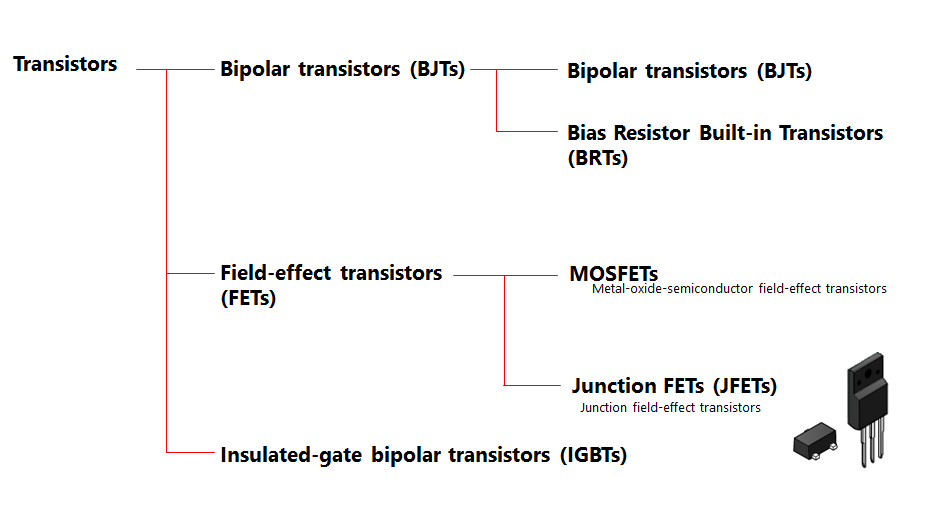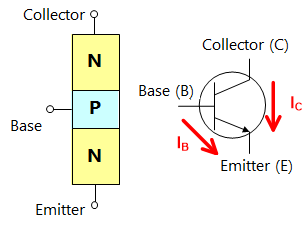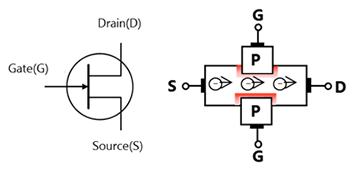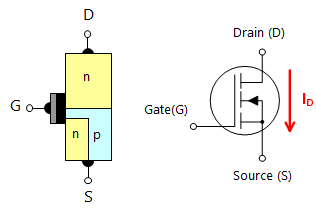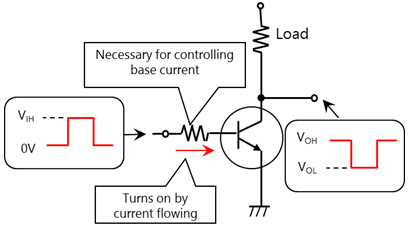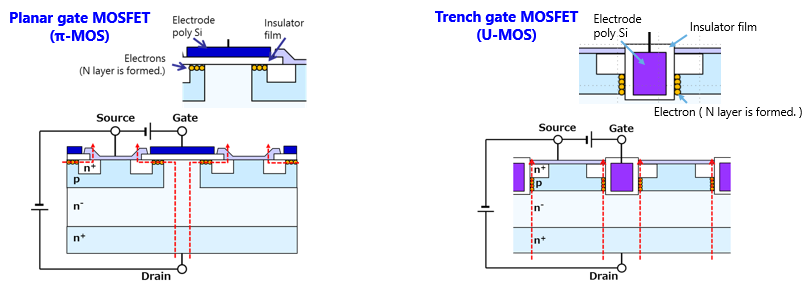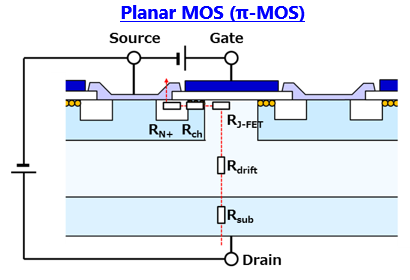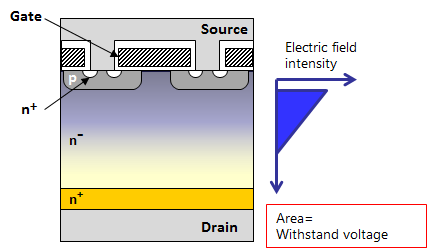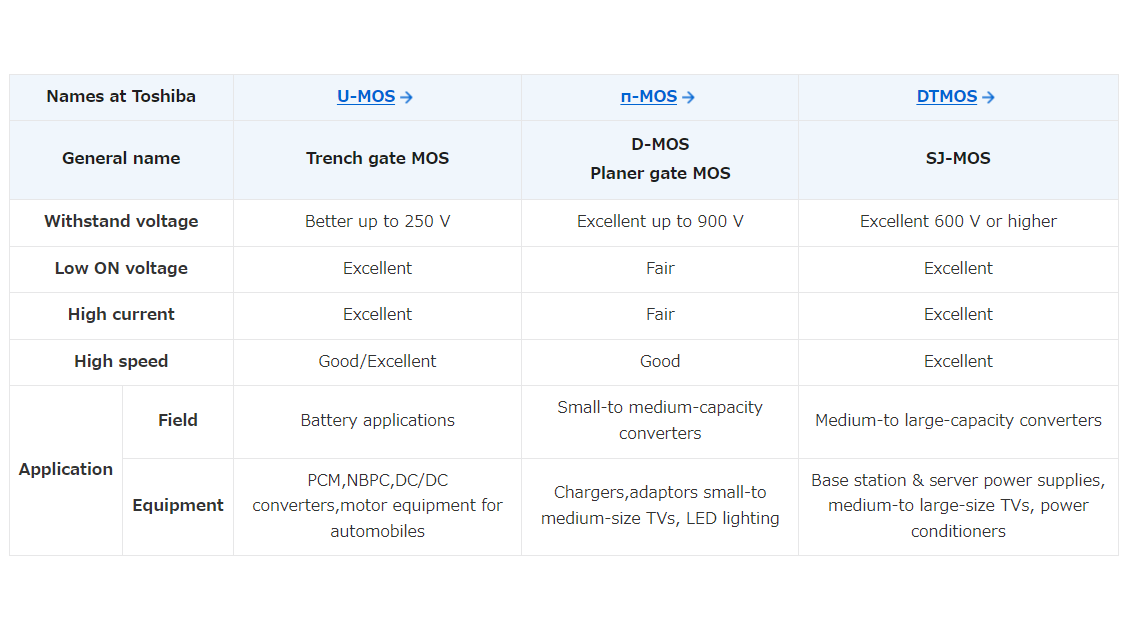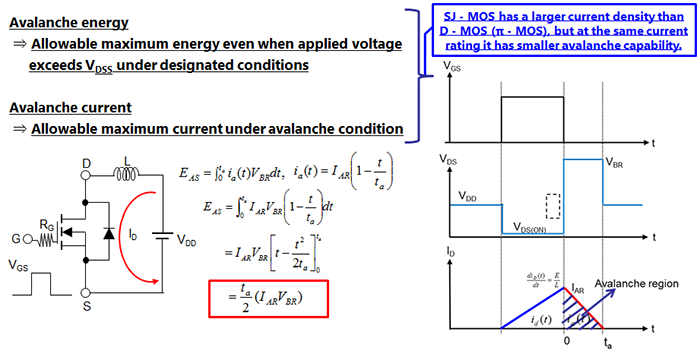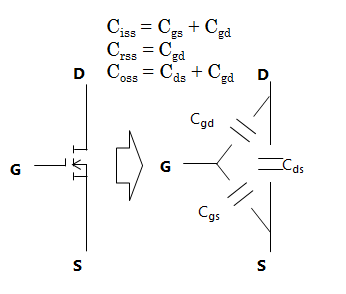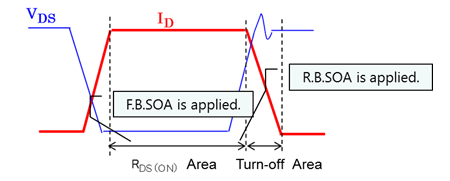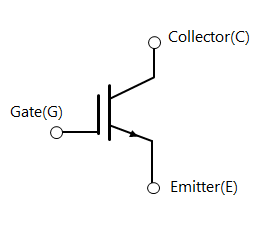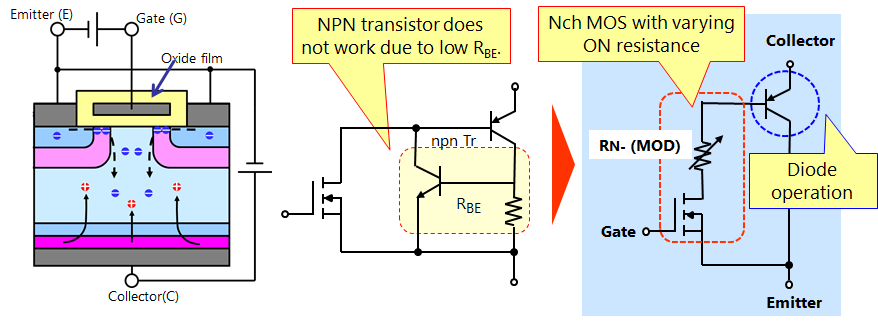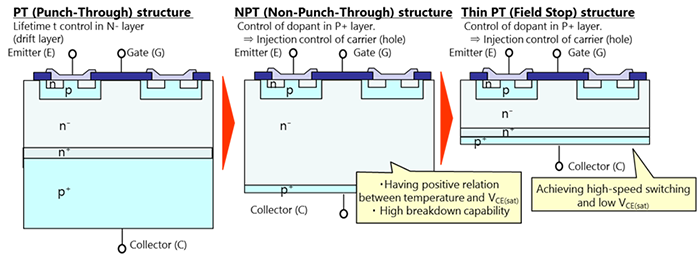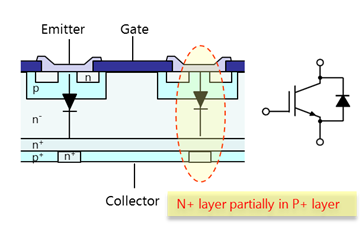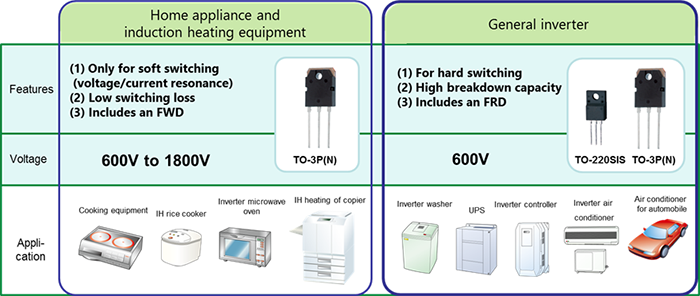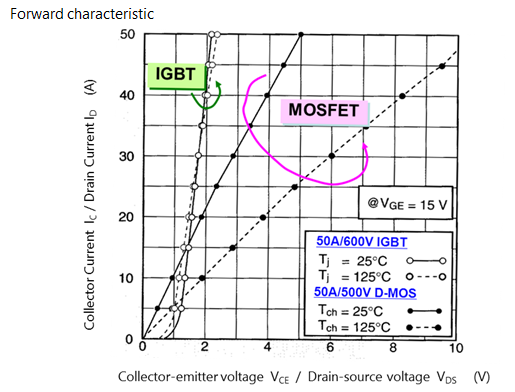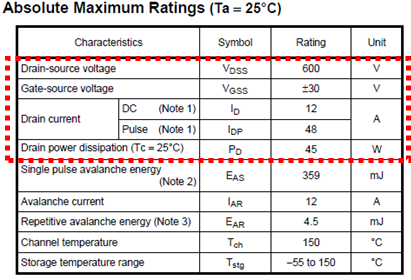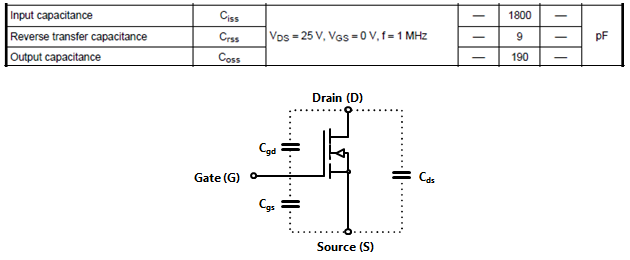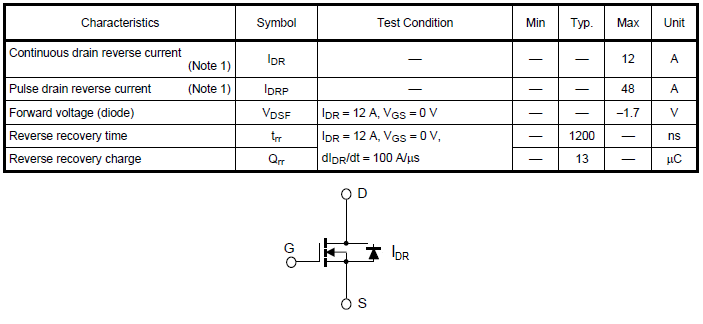Performance of MOSFETs: Drain Current and Power Dissipation
Download "Chapter III : Transistors" (PDF:2.0MB)
Permissible loss and drain current, which are typical maximum ratings of MOSFET, are calculated as follows.
(A different expression of current is adopted for some products.)
Power dissipation is calculated by thermal resistance and channel temperature. Drain current is calculated by the calculated power dissipation and ON resistance, using Ohm’s law.
PD:Power dissipation
⇒ Power loss allowed in designated temperature condition of the device

ID:Drain current
⇒ DC rating: DC current that flows in forward direction. (defined at room temperature)

IDp:Pulse drain current
⇒ Maximum drain current at designated pulse width. Generally, about 4 times DC current

Chapter III : Transistors
Related information
- Products
- Application Notes
- FAQ
A new window will open





